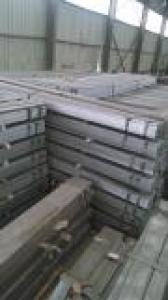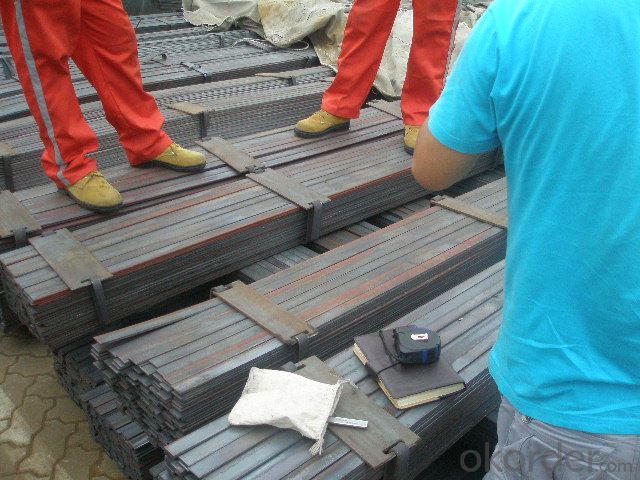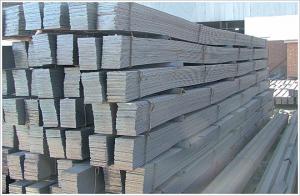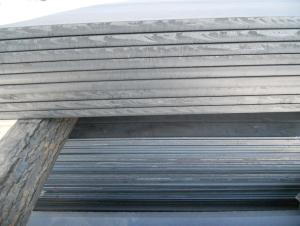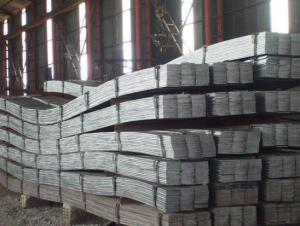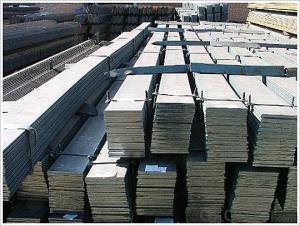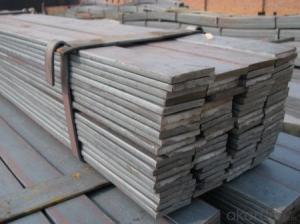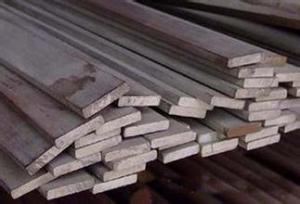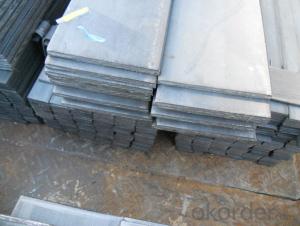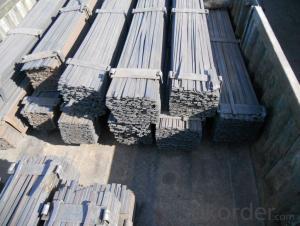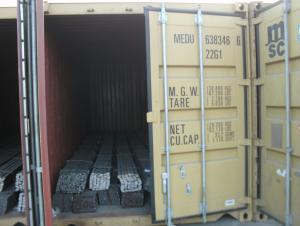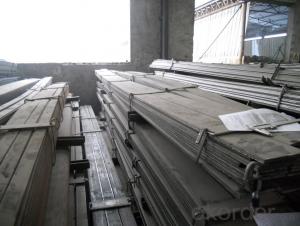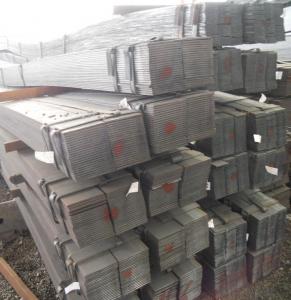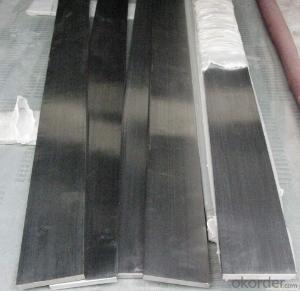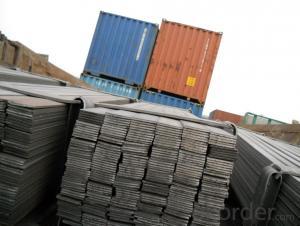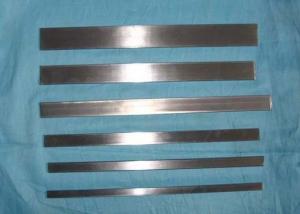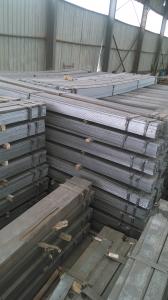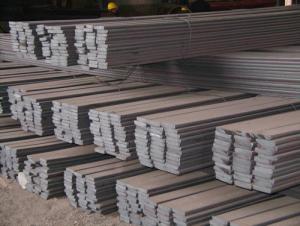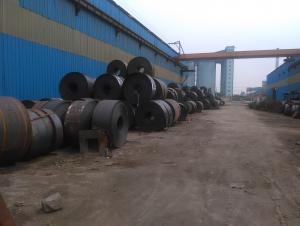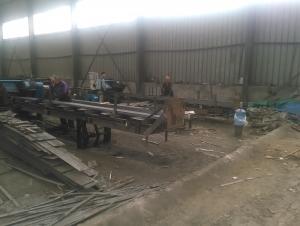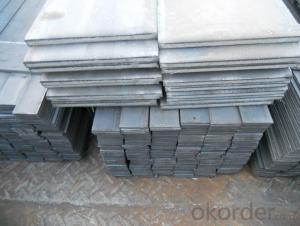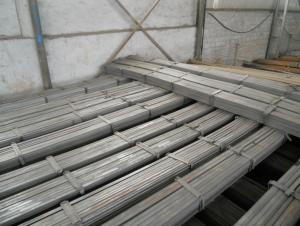Steel Flat Bar GB 235
- Loading Port:
- China Main Port
- Payment Terms:
- TT or LC
- Min Order Qty:
- -
- Supply Capability:
- -
OKorder Service Pledge
OKorder Financial Service
You Might Also Like
Product Description:
OKorder is offering Steel Flat Bar GB 235 at great prices with worldwide shipping. Our supplier is a world-class manufacturer of steel, with our products utilized the world over. OKorder annually supplies products to European, North American and Asian markets. We provide quotations within 24 hours of receiving an inquiry and guarantee competitive prices.
Product Applications:
Steel Flat Bar GB 235 are ideal for structural applications and are widely used in the construction of buildings and bridges, and the manufacturing, petrochemical, and transportation industries.
Product Advantages:
OKorder's Steel Flat Bar GB 235 are durable, strong, and resist corrosion.
Main Product Features:
· Premium quality
· Prompt delivery & seaworthy packing (30 days after receiving deposit)
· Corrosion resistance
· Can be recycled and reused
· Mill test certification
· Professional Service
· Competitive pricing
Product Specifications:
Standard: GB
Material: Q235
Origin place: China
Thickness: 3mm-30mm
Width:20mm-200mm
Length: Max 12m
Widely used for construction, Machinery manufacturing, Iron tower steel structure, Shipbuilding; Steel grating, Staircase, Bridge, Viaduct, Railway spare parts, Boilers making etc.
The steel flat bar is made through three processes:
1.Feeding the material: Feeding the row material (the steel plate) to Slitting Line.
2.Slitting:The steel plate would be slitted into expected width by lengthways cutter.
3. Leveled and cutting: The plat bar would be ground into level by the grinder and then cut into required length.
Packaging Details: The Steel Flat Bars are packed in bundles and loaded in 20 feet/40 feet container, or shipped by bulk cargo ,also we can do as customer's requirements.
FAQ:
Q1: Why buy Materials & Equipment from OKorder.com?
A1: All products offered byOKorder.com are carefully selected from China's most reliable manufacturing enterprises. Through its ISO certifications, OKorder.com adheres to the highest standards and a commitment to supply chain safety and customer satisfaction.
Q2: How do we guarantee the quality of our products?
A2: We have established an advanced quality management system which conducts strict quality tests at every step, from raw materials to the final product. At the same time, we provide extensive follow-up service assurances as required.
Q3: How soon can we receive the product after purchase?
A3: Within three days of placing an order, we will begin production. The specific shipping date is dependent upon international and government factors, but is typically 7 to 10 workdays.
Images:
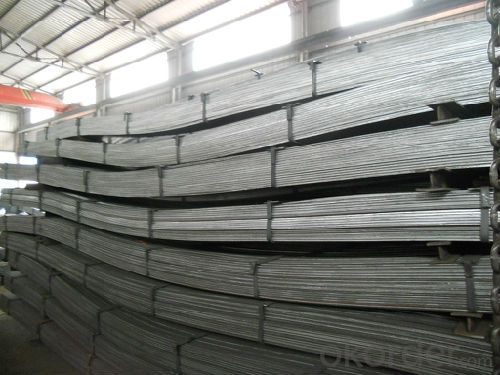
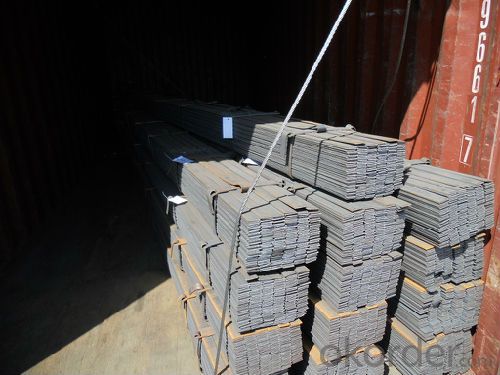
- Q: What is the use of slitting flat steel?
- Compared with the conventional steel plate, slitting flat steel has the following advantages:1, the product surface is bright and clean. Two times in the process of high-pressure water descaling process, to ensure that the steel surface clean and bright.2, special product specifications. The thickness of 8~45mm, width 150-600mm, length 5-15m, and the product specifications span is dense, can meet the needs of users, instead of in use, without cutting board, we can directly carry out welding.3, both sides of the vertical, clear water chestnut. The two vertical rolling in the finishing mill ensures good verticality of both sides, clear corners and good quality of the edges.
- Q: Can steel flat bars be hardened or tempered?
- Steel flat bars can indeed undergo hardening or tempering. Hardening entails heating the steel to a specific temperature and rapidly cooling it, typically through water or oil quenching. This procedure alters the steel's molecular structure, resulting in heightened hardness and resistance against wear and deformation. Conversely, tempering takes place after hardening and involves reheating the steel to a lower temperature, followed by slow cooling. This step aids in alleviating internal stresses and enhancing the steel's toughness and ductility, rendering it less brittle and more suitable for certain applications. To achieve desired mechanical properties, both hardening and tempering can be employed on steel flat bars. It is important to note, however, that the particular hardening or tempering method and parameters may differ depending on the type of steel utilized and the desired outcome.
- Q: Can steel flat bars be used for making furniture frames or supports?
- Yes, steel flat bars can be used for making furniture frames or supports. They provide excellent strength and durability, making them suitable for bearing heavy loads and providing structural stability. Additionally, steel flat bars can be easily welded, bent, or shaped to meet specific design requirements, making them a versatile choice for furniture construction.
- Q: What is the weight calculation formula for galvanized flat steel and galvanized steel angles?
- That is volume * density = weight.For example: L50*5 angle, general case, hand count is (0.05*2-0.005) *0.005*7850=3.729kg/m; 6m is 3.729*6=22.37kg [formula is W= (both long - and angle angle thickness) * angle thickness *7850* meters, of which 7850 were iron density value after conversion unit after multiple values, namely 7850kg/m3. The length and thickness and the number of meters into units are in meters, the weight of the unit is kg W.
- Q: Can steel flat bars be used for making blades or cutting edges?
- Yes, steel flat bars can be used for making blades or cutting edges, as they offer strength, durability, and a sharp edge that is ideal for cutting through various materials. However, the specific type of steel and its hardness will determine the effectiveness and suitability for different cutting applications.
- Q: What are the different grades of steel used in flat bars?
- The different grades of steel used in flat bars can vary, but some commonly used grades include mild steel, carbon steel, stainless steel, and alloy steel. These grades are chosen based on the specific requirements of the intended application, such as strength, corrosion resistance, and durability.
- Q: What is the maximum temperature steel flat bars can withstand?
- The specific grade of steel and its intended use determine the maximum temperature that steel flat bars can endure. In general, carbon steel can tolerate temperatures of approximately 600-800 degrees Celsius (1112-1472 degrees Fahrenheit) before it begins to compromise its structural integrity and mechanical properties. Nonetheless, certain alloy steels can withstand even higher temperatures due to their improved heat resistance characteristics. To determine the maximum temperature limit for a particular steel flat bar, it is essential to refer to the manufacturer's material specifications and guidelines. Furthermore, factors such as exposure duration, load, and cooling rate can also influence the maximum temperature that steel flat bars can withstand.
- Q: Can steel flat bars be used for making renewable energy industry equipment?
- Yes, steel flat bars can be used for making renewable energy industry equipment. Steel is a versatile and widely used material in various industries, including renewable energy. Steel flat bars offer several advantages for the manufacturing of equipment used in the renewable energy sector. Firstly, steel flat bars have excellent strength and durability properties, making them suitable for handling heavy loads and withstanding harsh environmental conditions. Renewable energy equipment, such as wind turbine towers, solar panel frames, and hydroelectric power plant components, often require robust materials to ensure long-lasting performance. Steel flat bars can provide the necessary structural integrity and support needed for such equipment. Secondly, steel flat bars can be easily shaped and fabricated into different forms and sizes, making them suitable for the customization and production of various renewable energy equipment. Whether it's manufacturing brackets, frames, or supports for solar panels or constructing the base for a wind turbine, steel flat bars can be cut, bent, and welded into the desired shape, allowing for flexibility in design and construction. Additionally, steel flat bars offer good corrosion resistance, which is crucial for renewable energy equipment that is often exposed to moisture, saltwater, and other corrosive elements. This corrosion resistance ensures the longevity and reliability of the equipment, reducing maintenance and replacement costs. Furthermore, steel is a sustainable and recyclable material, aligning well with the principles of renewable energy. Steel flat bars can be recycled and reused, reducing the environmental impact associated with manufacturing and disposal. In conclusion, steel flat bars are suitable for making renewable energy industry equipment due to their strength, durability, versatility, and corrosion resistance. With the ability to be fabricated into various forms and shapes, steel flat bars can fulfill the specific requirements of different renewable energy applications.
- Q: What are the advantages of using steel flat bars in construction?
- There are several advantages of using steel flat bars in construction. Firstly, steel flat bars offer exceptional strength and durability. Steel is known for its high tensile strength, which means it can withstand heavy loads and resist bending or breaking under pressure. This makes steel flat bars ideal for structural applications, such as beams, columns, and supports, where strength and stability are crucial. Secondly, steel flat bars are cost-effective. Compared to other building materials, steel is relatively affordable and readily available. Additionally, steel has a long lifespan and requires minimal maintenance, making it a cost-effective choice in the long run. Another advantage of using steel flat bars is their versatility. Steel can be easily manipulated and shaped, allowing for a wide range of design possibilities. Whether it's for creating intricate architectural details or constructing simple frameworks, steel flat bars can be customized to fit various construction needs. Furthermore, steel flat bars have excellent fire resistance properties. Steel is non-combustible and does not contribute to the spread of fire, making it a safe choice for construction in areas where fire protection is a concern. Additionally, steel does not release toxic gases when exposed to high temperatures, further enhancing its safety features. Lastly, steel is an environmentally friendly material. It is highly recyclable, meaning it can be reused or repurposed after its initial use. Recycling steel helps reduce waste and conserve natural resources, making it a sustainable option for construction projects. In conclusion, the advantages of using steel flat bars in construction include their exceptional strength, cost-effectiveness, versatility, fire resistance, and environmental friendliness. These factors contribute to the popularity of steel flat bars in various construction applications.
- Q: What is the maximum length of steel flat bars available?
- The maximum length of steel flat bars available can vary depending on the manufacturer and supplier. However, standard lengths for steel flat bars typically range from 20 to 24 feet. It is important to note that longer lengths may be available for custom orders or specialty applications, but they may come at an additional cost or require special handling during transportation. Therefore, it is always recommended to consult with the specific manufacturer or supplier to determine the maximum length of steel flat bars that they offer.
Send your message to us
Steel Flat Bar GB 235
- Loading Port:
- China Main Port
- Payment Terms:
- TT or LC
- Min Order Qty:
- -
- Supply Capability:
- -
OKorder Service Pledge
OKorder Financial Service
Similar products
Hot products
Hot Searches
Related keywords
